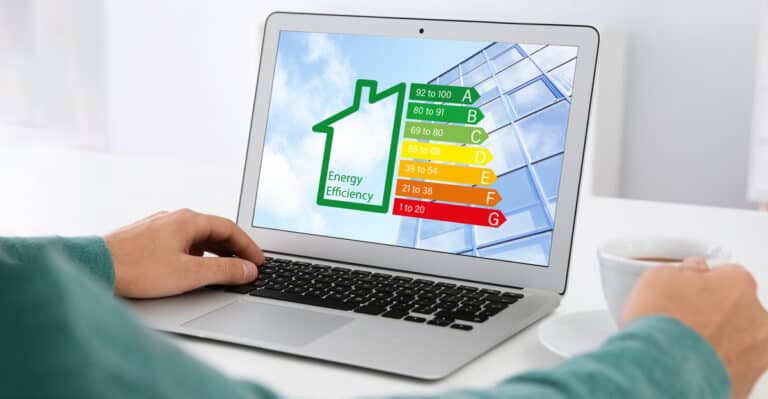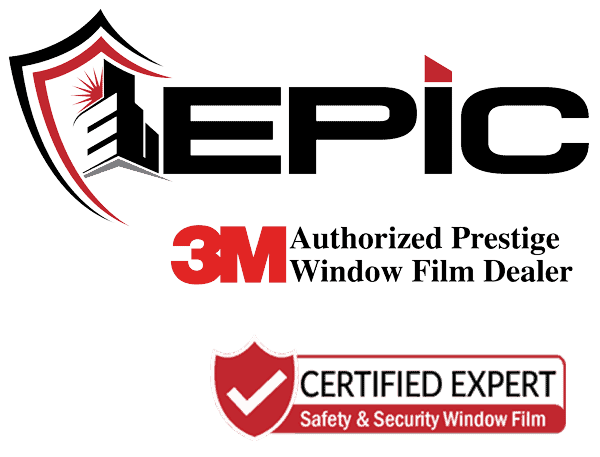The latest energy code regulations for new and existing commercial properties.
Tighter codes for energy-efficient buildings are here, but why now?
Governments worldwide are working towards energy regulations to mitigate the growing impact of climate change and global warming. One of their focus areas is enforcing building codes to improve energy efficiency in commercial and residential buildings.
Why this renewed focus on energy efficiency?
The building sector is a significant contributor to greenhouse emissions and high energy consumption. Buildings contribute to about 30% of greenhouse gas emissions and 40% of the total energy use. Building energy codes that produce more energy-efficient buildings are the cornerstone for reducing greenhouse gas emissions by setting and enforcing standards for new construction and existing building structures.
While regulating the energy efficiency of commercial buildings has been around for a while, recent studies have shown that previous standards are not enough to meet the Biden administration’s goals of at least a 50% reduction in economy-wide greenhouse gasses by 2030.
The International Code Council released a new framework to help governments and building industries meet energy efficiency standards. The new framework is a step in the right direction as the DOE (Department of Energy) confirmed that buildings following the ASHRAE 90.1-2019 standard for new commercial buildings will save a cumulative $51 billion in energy costs savings and 405 metric tons of carbon emissions by 2040.
These energy savings incentivize states and local governments to update their building codes for commercial buildings to reflect the new energy efficiency standards.
Energy-Efficiet Building Codes in Texas
According to the Texas State Energy Conservation Office (SECO), Texas consumed more than 10% of the US total energy consumption and is the fifth largest energy consumer in the world. Additionally, SECO reports that buildings account for almost 40% of Texas’s total energy usage and 70% of the state’s electricity usage.
Before 1999, Texas did not have a mandatory statewide energy code for commercial buildings.
Texas adopted its first statewide mandatory building energy code for commercial buildings in 2001, following the 2000 IECC (International Energy Code Council). Since then, Texas has adopted most of the IECC updates to the ASHRAE Standard 90.1.
Texas’s commercial buildings currently follow the 2015 International Energy conservation code for commercial, industrial and residential buildings with more than three stories.
The energy code in Texas dictates energy efficiency standards and criteria for commercial buildings such as:
- Envelop performance standards such as insulation, roofing, and windows
- Energy consuming systems such as HVAC systems, lighting, electrical power systems, and water heating
While the State Energy Conservation Office establishes the minimum energy code for Texas, the ‘home rule’ state status provides for local jurisdictions to adopt amendments on:
- The administration and enforcement of energy codes
- Track and report energy consumption and efficiency to SECO

Commercial building owners, property managers, and other stakeholders in the commercial buildings sector must adopt these measures to ensure their buildings pass the regular energy efficiency regulations and reflect the growing demand for tenants and investors for energy efficiency in commercial buildings.
How to prepare for changing energy efficiency building codes to avoid costly fines
As energy efficiency and carbon footprint reduction mandates continue to evolve, building owners, property managers, architects, and facility managers require cost-effective solutions to help them meet compliance, avoid costly penalties, and work within limited operating budgets.
Let’s discuss three steps commercial buildings can take to comply with the changing energy efficiency regulations.
1. Do an Energy Audit
According to the Environmental Protection Agency (EPA), 30% of the energy used in commercial buildings is wasted. The challenge for most commercial building owners and property managers is that they lack the data to pinpoint their energy consumption and areas of wastage.
An energy audit is the first step in making a commercial building efficient. It involves an examination of a building’s energy-consuming infrastructure to identify cost-savings opportunities. Some of the factors an energy audit looks into include:
- Utility bill analysis to understand your current energy costs
- An on-site survey of the building to evaluate all the lighting, heating, and energy-consuming systems and equipment
- Calculating equipment performance and runtime
- Reviewing the construction drawings where possible
- Testing for energy leakage in insulation, duct leakage, heating systems, ventilation systems, and equipment energy draws.
2. Set Your Energy Goals
Adopting energy conservation measures takes time, especially for an existing commercial building. Once you do an energy audit, the next step is setting goals for your building’s energy consumption and costs.
Setting goals helps you identify priorities that will help your business get close to achieving its energy efficiency goals. This does not necessarily mean tearing down your heating and ventilation system – it can be making minor changes to eliminate the small energy losses that seem negligible, such as lighting. We’ll cover a few of the cost-savings opportunities for commercial buildings in the next step.
3. Identify Cost-Savings Opportunities
An energy audit gives you a clear view of how much energy your building consumes and energy consumption costs. You can also identify cost-savings opportunities based on your current infrastructure.
Such opportunities could be as simple as ensuring your building maintains a temperature range in summer and winter to reduce heating and cooling costs. This can be through applications such as environmentally friendly insulation.
Some energy-efficient solutions you can implement include:
Install Commercial Building Window Films
The US Department of Energy recommends window film technology for energy conservation. Not only is window film effective at reducing energy consumption, but it also has a short payback period of as little as three years.
How does commercial window film work?
3M™ Window Film is the recommended window film technology for energy efficiency both during summer and winter. It works by reducing light pollution and the amount of heat entering a building.
Window film is installed directly on existing windows, which reduces your building’s carbon footprint in two ways. First, window films such as 3M window films can lower your building’s overall energy costs by blocking up to 78% of the sun’s heat entering a building through the windows in the summer months and insulating from heat loss in winter. Second, commercial window films are applied to existing windows rather than installing new replacement windows. This reduces waste in landfills, saves money, and reduces business interruptions from replacing windows.
Read more about the benefits of Commercial Window Film.
Update Lighting
Commercial buildings waste energy through lighting in two ways:
- Using lighting resources when not needed (for instance, a light left on in an office overnight)
- Over-lighting (providing more electric lighting than is required).
Whether indoors or outdoors, commercial buildings can adopt measures to ensure that they are using only the amount of light needed when it’s needed. Motion sensor lights are a good investment that lights up a room when someone walks in.
Reduce the HVAC load
Many commercial building owners, facility managers, and property managers, often look for HVAC improvements first, which can lead to unnecessary expenses. By utilizing other building envelope improvements such as window film installation, you can improve the overall insulation of the building, thus downsizing your HVAC needs and reducing energy consumption without expensive HVAC capital improvements.
If you conduct a thorough energy audit, you can identify areas with more lighting than is necessary and reduce these to the required amount. It can also include more energy-efficient lighting solutions such as LED lamps.
A final word on energy efficiency for commercial buildings
Energy efficiency standards in buildings are essential in achieving energy conservation goals. This is pushing the federal government to adopt building energy conservation codes. State and local governments are following suit.
To address these changes in regulations, commercial buildings have to change their building standards and practices to become more energy efficient. The first step towards energy efficiency is understanding how much energy your commercial building uses and identifying ways to save on energy.
Ready to find out the best solution for improving the energy efficiency of your commercial building? Find out more about the complimentary energy audit as the first step to reducing energy costs.
Free Energy Audit- Yes, Please!
About Epic Solar Control
Epic Solar Control is a premiere 3M window tinting company providing window film solutions and installation for commercial and residential clients in the Dallas, McKinney, Frisco, and North Texas region.
Epic Solar Control is a family business owned by Chris Eder, an industry expert in safety and security film. Epic Solar Control has built a reputation for providing exceptional quality workmanship and customer service. Have questions about window tinting or security film solutions? Give us a call anytime, we’d love to help!.
Epic Solar Control
180 Industrial Blvd., Suite R
McKinney, TX 75069
469-577-9933
Contact us!

Questions?
We’re here to help. Epic Solar Control is a 3M™ Certified Dealer Installer and we’re happy to answer any of your questions regarding window tint films, the installation process, or any other questions.






